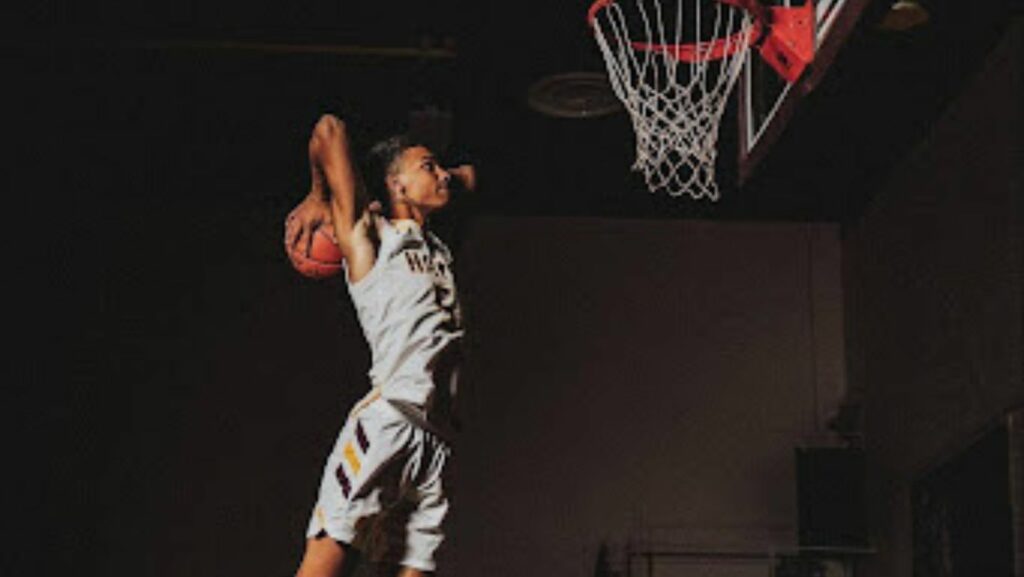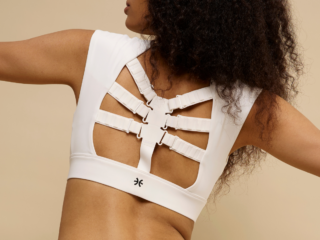
Look no further than the National Basketball Association, which has been the standard professional basketball league ever since. Some NBA players have become legends, and their basketball jerseys are as iconic as they are. Fans wear their jerseys in and outside the court for the love of the game and their courtside heroes.
For players of the sport, wearing a basketball uniform establishes their identity individually and as part of the team. They wear personalized, customized basketball jerseys showing their distinct name and number and their team’s color, name, or logo. The extent of personalization in basketball uniforms is established in the rules and regulations of the club.
Have you ever wondered how that basketball jersey you are wearing or seeing came to be how it is now? Let’s look at its fascinating history, shorts and all, where sports, fashion, music, and culture intersect.
Back in The 1900s
In 1891, James Naismith invented basketball as an indoor activity that students could play during winter. Naismith, then a graduate student and instructor in physical education at Springfield College, Massachusetts, also made the original rules on what he called “basket ball.”
Basketball uniforms took on a more distinct look in the following years; previously, this basketball uniform could be any suit used in the gymnasium, as Dr. Naismith wrote in his 1996 book (originally published in 1941). For example, some basketball teams wore short-sleeved jerseys and long trousers.
Dr. Naismith also discussed the first basketball outfit in a Spalding catalog in 1901. Per the catalog, pants could be knee-length padded pants (like those used in football), short padded ones similar to modern-day basketball shorts, or knee-length jersey tights. Suggested shirts were sleeveless shirts and quarter-length sleeves.
The 1920s And Shorts
The 1920s marked a shift in basketball attire toward functionality to cater to the intensifying competitive nature of the game. The era saw the replacement of long pants and sleeved shirts with mid-length shorts and sleeveless jerseys, aimed at providing players with greater mobility and freedom of movement. Remarkably, the jerseys were designed to fasten beneath the crotch to prevent them from becoming untucked during the game.
Women’s basketball clothing consisted of knee-length bloomers, short-sleeved shirts, and knee pads, while knee-high socks became a standard for both male and female players.
The subsequent decade also saw lightweight materials, nylon, and polyester, used in basketball jerseys instead of the usual wool.
The 1940s Through 1980s Short Shorts
It was in 1946 that the precursor of the NBA, the Basketball Association of America, was formed. The pro basketball players in the league wore shorts above their knees and jerseys that bore their team name and number. This picture from 1957 showed players, each wearing what was described as a singlet jersey tucked in well-above-the-knee-length shorts.
Tiny, tighter-fit shorts among NBA players dominated the decades until the 1980s. From the Boston Celtics’ vault, look at Bob Cousy’s shorts in the 1950s to 1960s, where a three-inch inseam for shorts was the norm. Hot pants were trendy among men and women in the ‘70s. Larry Bird of the Boston Celtics wore this kind of shorts in the ‘80s.
The mid-1980s Through 1990s Baggier, Longer Shorts
Legend states that Michael Jordan asked for basketball shorts to be longer so he could wear his lucky shorts underneath. Thus began the reign of longer shorts. Fast forward to a few years, and there was the Fab Five of the University of Michigan and their popular basketball fashion in the ‘90s, mainly black socks and baggy shorts that fell below their knees.
These long, baggy-style shorts and loose-fitting jerseys, in general, were tuned to the popular hip-hop style. Amid the long basketball shorts era in the NBA, John Stockton challenged the times and kept to his short shorts.
Photo by Mira Kireeva from Unsplash
2000s And Present
The baggy uniforms carried into the 2000s with Allen Iverson. Still, some players opted for a more tailored look, and LeBron James, at some point in 2015, chose to wear shorts shorter than he normally wore. The same year, James was seen ripping his jersey sleeve out of frustration.
A bit on the sleeved jerseys: They were introduced in 2013 and are supposedly for fans who are not into wearing the sleeveless jerseys. The deal with Adidas, which was NBA’s apparel partner then, expired in 2017, and the sleeved jerseys were discontinued.
Shooting sleeves have also made an appearance. Their popularity is credited to its first wearer, Iverson, who wore a compression stockinette for his elbow bursitis in 2001.
Compression tights under uniform shorts are another noticeable trend. These compression tights, shorts, or full-length leggings are believed to help the player’s performance.
While not in the uniform, you’ll see more basketball players wearing accessories like headbands, sweatbands, and armbands. Their personality also shines through their shoes, which are more colorful and personalized on the court.
Interestingly, shoes are the only article in a player’s uniform that a commercial logo is allowed. Here’s another pertinent uniform rule in the NBA: the jersey should show the player’s number at the front and the back in a color contrasting with the shirt’s.

What about Women’s Basketball Uniforms?
Modern basketball uniforms for women are pretty much the same as men’s. Women’s basketball uniforms have come a long way, from skirts to shorts and long to sleeveless tops.
This sporting goods manufacturer’s official basketball guide for women had an illustration cover of women wearing blouses and knee-length bloomers. There was a time in the 1900s when they played with floor-length skirts and dresses. These evolved into shorter skirts and shorts with buttons. The 1950s girls’ basketball team photo shows what their uniforms looked like. Also, in the 1980s, women’s basketball players wore tank jersey tops and shorts.
Embodying Jersey’s Legacy
Next time you see a basketball jersey, you’ll picture its history and imagine the many who played it before you. You’ll also think of their triumphs and struggles, such as women players and their restrictive uniforms back then. It’s impressive how the basketball uniform has evolved through time, reflecting changing beliefs, preferences, and circumstances.
Jerseys are proof of identity and passion for the sport. So wear your basketball uniform with pride. And even if you don’t actively play and are more of a fan, wear your jersey to show support and love for your favorite team. That’s the spirit!













